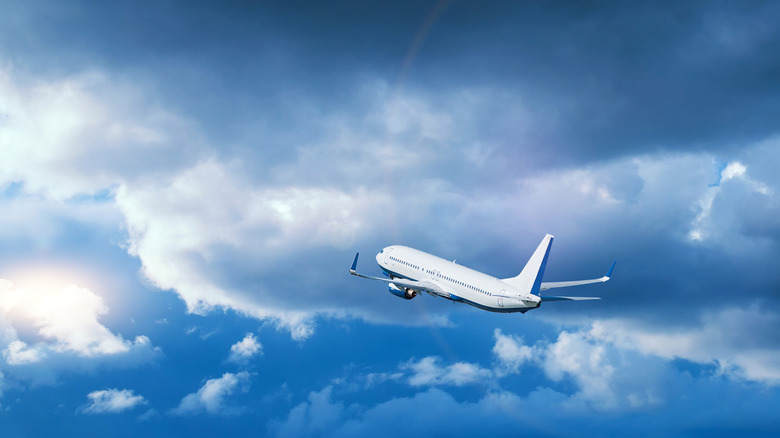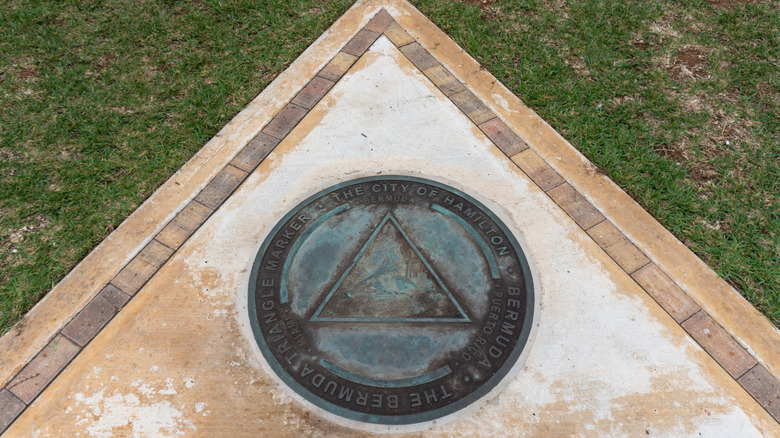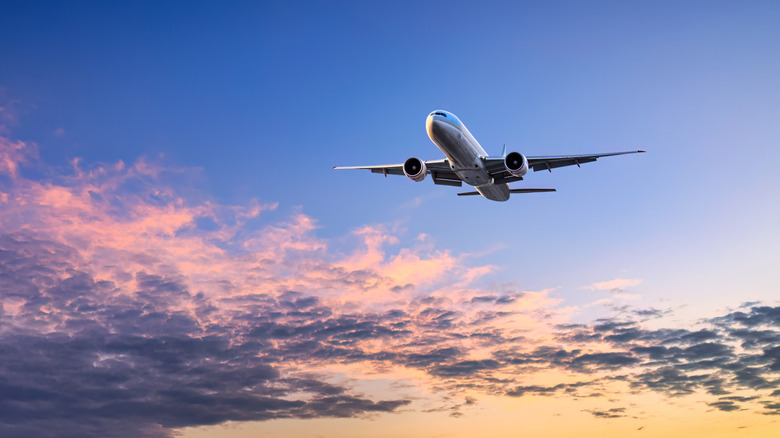No, Planes Don't Avoid The Bermuda Triangle: Separating Fact From Fiction
Connect the dots between Miami, Bermuda, and Puerto Rico, and you get the so-called Bermuda Triangle: that mysterious, much-feared area of the North Atlantic Ocean that has been the subject of countless books, documentaries, and conspiracy theories. For decades now, reports of ships and aircraft mysteriously disappearing in this region have led many to think that it's a dangerous, supernatural place no plane would dare enter.
But, truth be told, the idea that pilots avoid flying over the Bermuda Triangle is simply not true. Despite all the rumors and urban legends, the reality is that aircraft pass through this region all day, every day, without issue. Cargo ships cross the Atlantic just as frequently, and with just as few problems. Basically, captains and pilots across air and sea do not treat it any differently than any other part of the world's oceans.
As a matter of fact, the Bermuda Triangle is a very busy corridor for both commercial flights and shipping vessels. Flights from major airports like Miami International and San Juan International regularly pass through it. Airlines such as American, Delta, and British Airways all have routes that cross through this region, too. So where did the idea come from that the Bermuda Triangle is a no-fly zone or too dangerous to traverse?
Where did the myths about the Bermuda Triangle come from?
The myth of the Bermuda Triangle didn't really start to take hold until the 1950s when a series of sensationalist stories focused on missing ships and planes in the area. Some of the most well-known cases were the 1945 disappearance of a squadron of five U.S. Navy bombers during a training mission and the 1918 disappearance of the USS Cyclops, but there were others that added to the whole "Bermuda Triangle" thing.
Some of these incidents were never officially resolved, but many other disappearances (like the plane Amelia Earhart was flying) were never even near there to begin with. Most researchers agree that environmental factors such as violent storms, navigational errors, and equipment failure are much more likely culprits than some supernatural otherworldly factor. Though it's true that parts of the Bermuda Triangle are prone to severe storms, and that oceanic trenches and occasional magnetic deviations definitely exist, none of these phenomena are unique to this area. For instance: Magnetic anomalies occur all over the world, and pilots are trained to account for these deviations.
Although, theories about what is behind incidents in the Bermuda Triangle range from alien abductions and time warps to underwater methane explosions, in reality, the rate of disappearances in the Bermuda Triangle is not statistically higher than in any other busy maritime or air travel corridor.
Is it safe to fly through the Bermuda Triangle?
No matter if you're a Bermuda Triangle truther or not, the fact remains: Modern navigation and safety protocols have drastically improved since those 20th century disappearances. Satellite-based GPS, real-time weather tracking, and constant communication with air traffic control centers all help make sure that flights across all regions of the globe — including the Bermuda Triangle — are carried out with the highest levels of safety possible.
Perhaps the ultimate proof that the Bermuda Triangle is nothing to fear (much less avoid): It's not even an officially recognized region by any authoritative geographic body on the planet. It appears on no aviation charts, and no commercial or private flight operators are required to report any special protocol when traveling through it. Same for boats. It's not like insurers charge higher premiums for ships passing through the area, which typically accompanies any legitimate level of risk.
With tens of thousands of successful passages through this area every year, the evidence overwhelmingly proves it: The Bermuda Triangle is no more dangerous than any other part of the Atlantic Ocean. Whether you're boarding a cruise from Miami or flying to a Caribbean island, there's no need to worry about the Bermuda Triangle. It's only a myth, and planes are still the safest way to travel.


